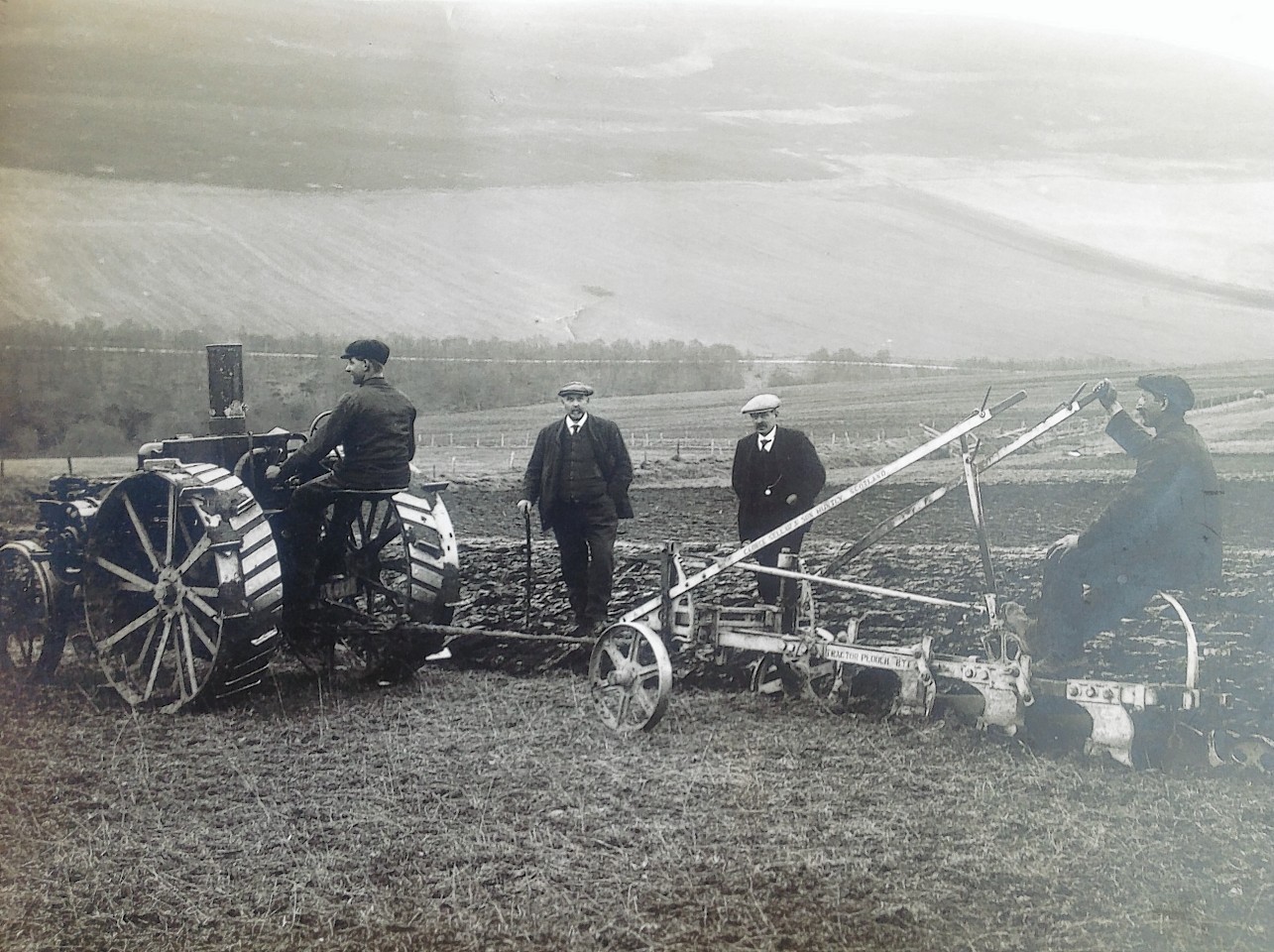Case IH has plenty to celebrate this year as the company was responsible for the first International tractors to arrive on these shores 100 years ago.
The arrival of the tractors aimed to help produce home-grown food in the perilous times of World War I.
The International Harvester Company of America was one of the pioneers in tractor production and led the way for many years. Early machines helped break up the prairies before IHC started to develop smaller tractors for smaller farms and it was these more modern and more nimble tractors that arrived in Britain.
The twin cylinder 12-25 Mogul was launched in the UK in May 1915 and had an enclosed engine and driver’s canopy while the smaller single cylinder 8-16 was unveiled in September. These tractors were turned out in green with red wheels and the 8-16 version took part in the Highland and Agricultural Society of Scotland Tractor Trial at Kings Park, Stirling, on October 5-6, 1915.
The tractor, entered by the International Harvester Co of Great Britain, performed well against the opposition of Overtime and Sandusky tractors, a Wyles Motor plough and a Mann steam tractor. It used a two furrow Massey Harris Riding plough (although a three-furrow Ransome had been ordered but failed to appear on time), it was also trialled driving a threshing mill and on road haulage.
By the close of 1915 14 of the 8-16 Moguls had been delivered to British farms while 25 of the larger “twin” Moguls were distributed. Handling the sales of these first tractors in central Scotland was the Scottish Motor Traction Company who had depots in Edinburgh and Glasgow.
Long-established plough manufacturers Geo Sellar and Son Ltd, of Huntly, also became involved with selling these International tractors during the war years, helping set up a long connection between the two concerns. No doubt IHC needed a presence in the strong farming area of the north-east which was too far away from Scottish Motor Traction’s territory.
In 1916 IHC themselves, staged demonstrations of their tractors to encourage sales especially of the larger Mogul models. However the year would be noted for the arrival of another International tractor which would go on to be its most popular. This was the Titan 10-20 which originated from the firm’s plant in Milwaukee as opposed to the Chicago-built Moguls. The Titan unlike the Moguls was turned out in grey with red wheels.
During 1916, 257 Titans were brought in with the first one sold to a James Watt on Salisbury Plain with the supplying dealer being TH White who are still in operation today. A solitary four-cylinder Titan 15-30, nicknamed the “Flaming Four”, also arrived in 1916 with one other arriving in 1919.
German U-boats and the poor harvest in 1916 forced the government to introduce initiatives to boost home food production. One was the placing of orders of US-built tractors to help mechanise British farms stripped of men and horses. Many of these tractors were operated by the Ministry of Munitions and were driven by drivers seconded from the Army Service Corps. The authorities also used many International tractors for the large-scale farming operations it undertook behind the lines in France to provide food for troops and forage for horses and mules.
IHC was tasked with supplying 2,362 tractors, second only to the new Fordson tractor order. The Titan made up the bulk of the order while private sales continued outside the contract. Sales figures for the year were 1,203 Titan 10-20s, 433 Mogul 8-16s, and 149 Mogul 12-25s. The Titan was priced at £375 while the smaller Mogul sold for £320 and the larger for £550.
Helping promote mechanisation in Scotland was a second wartime trial staged by the HASS in 1917. Held in October the trial was staged at three venues, East Craigie Farm at Cramond, Edinburgh; Blackhill Farm at Maryhill, Glasgow; and Spoutwells and New Mains farms at Scone.
Four IHC tractors were to take part with a solitary 12-20 Mogul brought over for the event. It was joined by the 8-16 and 12-25 Moguls and the 10-20 Titan. They used Canadian Hamilton and Cockshutt ploughs alongside Ransome and Sellar examples. They competed against an amazing array of 29 tractors and motor ploughs such was the rise in farm mechanisation by then.
The IHC brand of tractor was gaining in popularity and carving out a great deal of respect as reliable well-built machines amongst British farmers. The final year of the war saw shipments of 752 Titans, 28 Mogul 8-16s, 165 Mogul 10-20s and 80 Mogul 12-25s. The decline in 1918 sales was largely due to the completion of the government contract. With US troops now involved in hostilities in France the shipment of tractors ceased for a short while from May as military supplies took precedence on ships. Supplies were reinstated a couple of months later.
With the ending of the war in November 1918 and the ending of restrictions in 1919, sales boomed for both new International tractors and for the government surplus machines offered second hand. By the 1920s International had become the dominant force with 40% of the market of imported tractors and could claim nearly every British farm had some piece of IHC equipment. Another legacy created by the war to end all wars.
Acknowledgements: Thanks to George Lovie and Stuart Gibbard for help with this article.
